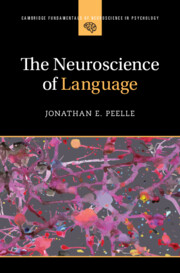Refine search
Actions for selected content:
37953 results in Cambridge Textbooks
Contents
-
- Book:
- Introduction to Epidemiology for the Health Sciences
- Published online:
- 28 May 2025
- Print publication:
- 24 April 2025, pp v-viii
-
- Chapter
- Export citation
4 - Opening the epidemiological toolbox
- from Part 3 - Reasoning
-
- Book:
- Introduction to Epidemiology for the Health Sciences
- Published online:
- 28 May 2025
- Print publication:
- 24 April 2025, pp 94-120
-
- Chapter
- Export citation
About the authors
-
- Book:
- Introduction to Epidemiology for the Health Sciences
- Published online:
- 28 May 2025
- Print publication:
- 24 April 2025, pp ix-ix
-
- Chapter
- Export citation
Index
-
- Book:
- Introduction to Epidemiology for the Health Sciences
- Published online:
- 28 May 2025
- Print publication:
- 24 April 2025, pp 411-418
-
- Chapter
- Export citation
Part 2 - Analysing
-
- Book:
- Introduction to Epidemiology for the Health Sciences
- Published online:
- 28 May 2025
- Print publication:
- 24 April 2025, pp 33-92
-
- Chapter
- Export citation
Part 4 - Problem-solving
-
- Book:
- Introduction to Epidemiology for the Health Sciences
- Published online:
- 28 May 2025
- Print publication:
- 24 April 2025, pp 159-278
-
- Chapter
- Export citation
Copyright page
-
- Book:
- Introduction to Epidemiology for the Health Sciences
- Published online:
- 28 May 2025
- Print publication:
- 24 April 2025, pp iv-iv
-
- Chapter
- Export citation
Part 6 - Decision-making
-
- Book:
- Introduction to Epidemiology for the Health Sciences
- Published online:
- 28 May 2025
- Print publication:
- 24 April 2025, pp 315-379
-
- Chapter
- Export citation
Part 5 - Evaluating
-
- Book:
- Introduction to Epidemiology for the Health Sciences
- Published online:
- 28 May 2025
- Print publication:
- 24 April 2025, pp 279-314
-
- Chapter
- Export citation
Acknowledgements
-
- Book:
- Introduction to Epidemiology for the Health Sciences
- Published online:
- 28 May 2025
- Print publication:
- 24 April 2025, pp x-xii
-
- Chapter
- Export citation
12 - Bringing it together
- from Part 6 - Decision-making
-
- Book:
- Introduction to Epidemiology for the Health Sciences
- Published online:
- 28 May 2025
- Print publication:
- 24 April 2025, pp 348-379
-
- Chapter
- Export citation
1 - Thinking critically, problem-solving and setting priorities in epidemiology
- from Part 1 - Thinking like an epidemiologist
-
- Book:
- Introduction to Epidemiology for the Health Sciences
- Published online:
- 28 May 2025
- Print publication:
- 24 April 2025, pp 2-32
-
- Chapter
- Export citation
11 - Considering the effect of bias and confounding
- from Part 6 - Decision-making
-
- Book:
- Introduction to Epidemiology for the Health Sciences
- Published online:
- 28 May 2025
- Print publication:
- 24 April 2025, pp 316-347
-
- Chapter
- Export citation
Glossary
-
- Book:
- Introduction to Epidemiology for the Health Sciences
- Published online:
- 28 May 2025
- Print publication:
- 24 April 2025, pp 380-387
-
- Chapter
- Export citation
9 - Controlling exposure
- from Part 4 - Problem-solving
-
- Book:
- Introduction to Epidemiology for the Health Sciences
- Published online:
- 28 May 2025
- Print publication:
- 24 April 2025, pp 245-278
-
- Chapter
- Export citation
Acknowledgement of Country
-
- Book:
- Introduction to Epidemiology for the Health Sciences
- Published online:
- 28 May 2025
- Print publication:
- 24 April 2025, pp ii-ii
-
- Chapter
- Export citation
Part 3 - Reasoning
-
- Book:
- Introduction to Epidemiology for the Health Sciences
- Published online:
- 28 May 2025
- Print publication:
- 24 April 2025, pp 93-158
-
- Chapter
- Export citation

The Neuroscience of Language
-
- Published online:
- 17 April 2025
- Print publication:
- 10 April 2025
-
- Textbook
- Export citation
References
-
- Book:
- Logic for Everyone
- Published online:
- 12 May 2025
- Print publication:
- 17 April 2025, pp 436-439
-
- Chapter
- Export citation
17 - Semantic Tableaux
- from Part II - Quantified Logic
-
- Book:
- Logic for Everyone
- Published online:
- 12 May 2025
- Print publication:
- 17 April 2025, pp 310-324
-
- Chapter
- Export citation
